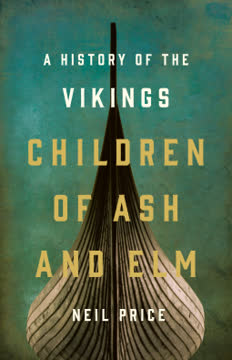Key Takeaways
1. The Viking Worldview: More Than Meets the Eye
Any attempt to understand the Vikings must first delve beneath that deceptive exterior to get inside their minds, even inside their bodies.
Beyond the Surface. The Vikings' world was not simply a collection of people and landscapes, but a complex tapestry woven with supernatural beings, multiple realms of existence, and a unique understanding of the human soul. To truly grasp their culture, one must move beyond the surface and explore their internal world.
A Shared Reality. The Vikings coexisted with a multitude of "Others," including gods, spirits, and creatures that were as real to them as trees and rocks. This wasn't a matter of belief, but of knowledge, an integral part of their natural world.
The Fourfold Soul. Each individual possessed not just a single soul, but a composite of separate beings: the hamr (physical shape), the hugr (mind/personality), the hamingja (luck), and the fylgja (guardian spirit). This complex understanding of personhood shaped their interactions with the world and each other.
2. The Making of Midgard: Creation and Cosmology
For all the fearful confusion about their identity among those they encountered, in the Vikings’ own minds there was never any doubt at all: they were the children of Ash, the children of Elm.
A Universe Forged in Violence. The Norse cosmos began with the void of Ginnungagap and was shaped through the violent dismemberment of the giant Ymir. His body became the earth, his blood the oceans, and his skull the sky. This unsettling origin story highlights the Vikings' acceptance of violence as a fundamental force in creation.
The World Tree. At the center of the Norse cosmos stood Yggdrasill, a giant ash tree connecting all nine realms, including Asgard (home of the gods), Midgard (the human world), Jotunheim (land of the giants), and Hel (the realm of the dead). This interconnectedness emphasized the Vikings' understanding of the universe as a unified whole.
The Gods and Their Roles. The Norse pantheon consisted of two families, the Aesir and the Vanir, each with distinct qualities and roles. Gods like Odin, Thor, Freyja, and Loki embodied war, wisdom, fertility, and trickery, reflecting the diverse aspects of human experience.
3. The Long Shadow of Rome: Setting the Stage for Change
In a very real sense, the ‘new world’ of Viking-Age Scandinavia began in a cold, unending winter beneath a darkened sun.
Interactions with the Empire. The Scandinavians of the Iron Age were deeply influenced by the Roman Empire, engaging in trade, military service, and cultural exchange. The Empire's decline created instability and opportunity in the North.
The Migration Period Crisis. The fifth and sixth centuries saw widespread social and political upheaval across Europe, impacting Scandinavia through migration, warfare, and economic disruption. This period of crisis led to the rise of new social structures and power dynamics.
The Climate Disaster. A series of volcanic eruptions in the sixth century caused a "dust veil" that plunged the Northern Hemisphere into a prolonged period of cold and darkness. This environmental catastrophe led to widespread famine, disease, and social collapse in Scandinavia.
4. The Sixth-Century Shock: Climate Crisis and Transformation
The recovery from a half-century of trauma was the beginning of something different, a new order of warlords and their retinues, of petty kingdoms ruled from great halls—and the whole culture of mythologized, ritual power that supported them—that would ultimately set the stage for the Viking phenomenon.
The Fimbulwinter's Legacy. The prolonged period of cold and darkness, known as the Fimbulwinter, had a profound impact on Scandinavian society, leading to mass mortality, settlement abandonment, and a shift in religious beliefs. This trauma shaped the Viking worldview and contributed to the rise of a new warrior culture.
Geomythology. The Norse myths, particularly the tale of Ragnarök, may have been influenced by the real-life experience of the sixth-century climate crisis. The stories of a world consumed by fire and ice reflected the anxieties and fears of a society grappling with environmental catastrophe.
Regional Variations. The impact of the sixth-century crisis varied across Scandinavia, with some regions experiencing greater devastation than others. This led to shifts in power and the emergence of new regional identities.
5. Power and Society: The Rise of New Elites
This new world was Midgard, the home of the people from whose collective consciousness it emerged: the Scandinavians.
The Consolidation of Power. The period following the sixth-century crisis saw the rise of militarized elites who consolidated land ownership, built great halls, and established new political structures. This marked a shift from communal governance to a more hierarchical system.
Hall Culture. The great hall became the center of social and political life, serving as a space for feasting, storytelling, and the performance of power. These halls were not just buildings, but symbols of authority and control.
The Warrior's Beauty. The new elites embraced a militaristic ethos, emphasizing honor, loyalty, and martial prowess. This warrior culture was reflected in their clothing, weapons, and burial rituals.
6. The Viking Ship: A Tool of Power and Mobility
What unites most of these perspectives is that they privilege the observer, looking in on the Vikings from the outside, and ignore how they themselves saw the world.
Master Mariners. The Vikings were renowned for their shipbuilding skills and their mastery of the sea. Their longships were not just vessels, but symbols of their power and mobility.
Ship Design and Function. Viking ships were designed for both raiding and trade, with shallow drafts that allowed them to navigate rivers and coastal waters. They were also capable of crossing the open ocean, enabling the Vikings to reach distant lands.
The Maritime Economy. The Viking ship was not just a tool of war, but also a key component of the Scandinavian economy. It facilitated trade, exploration, and the movement of people and goods across vast distances.
7. The Allure of the West: Raids, Trade, and Expansion
The Vikings are known today for a stereotype of maritime aggression—those famous longships, the plunder and pillage, the fiery drama of a ‘Viking funeral’.
The First Raids. The Viking Age began with a series of raids on coastal settlements in the British Isles, targeting monasteries and other undefended targets. These raids were driven by a combination of economic opportunity, political ambition, and religious fervor.
The Expansion of Raiding. Over time, the Viking raids grew in scale and intensity, with fleets of hundreds of ships attacking major cities and coastal regions across western Europe. These raids brought wealth, slaves, and new ideas back to Scandinavia.
The Viking Mindset. The Vikings were not just mindless barbarians, but complex individuals with their own motivations and rationales for their actions. They were driven by a desire for wealth, fame, and power, but also by a sense of adventure and a belief in their own destiny.
8. The Eastern Rivers: A Different Path to Wealth and Influence
No other contemporary peoples ranged over the then-known Eurasian and North Atlantic world to the same degree as the Scandinavians.
The Eastern Trade Routes. While the Vikings are often associated with the West, they also played a significant role in the trade networks of eastern Europe and Asia. They traveled along the rivers of Russia and Ukraine, connecting the Baltic Sea with the Black Sea and the Caspian Sea.
The Rus'. The Vikings who ventured east became known as the Rus', a group of warrior-traders who established settlements and controlled trade routes along the rivers. They interacted with Slavic, Finnish, and Turkic peoples, creating a unique cultural blend.
Byzantium and the Silk Road. The Rus' traded with the Byzantine Empire and the Abbasid Caliphate, exchanging furs, slaves, and other goods for silver, silk, and spices. They also served as mercenaries in the Byzantine army, forming the elite Varangian Guard.
9. The Diaspora Takes Root: New Worlds and Hybrid Cultures
The Viking world this book explores was a strongly multicultural and multi-ethnic place, with all this implies in terms of population movement, interaction (in every sense of the word, including the most intimate), and the relative tolerance required.
Settlement and Assimilation. The Vikings did not just raid and trade, but also settled in new lands, establishing colonies in the British Isles, Iceland, Greenland, and North America. These settlements led to the creation of hybrid cultures, blending Scandinavian traditions with those of the local populations.
The Danelaw. In England, the Vikings established a region known as the Danelaw, where Scandinavian law and customs prevailed. This led to a fusion of Anglo-Saxon and Norse cultures, with lasting impacts on language, place-names, and social structures.
The North Atlantic Colonies. The Vikings' westward expansion led to the discovery and settlement of Iceland, Greenland, and North America. These colonies represented a bold experiment in adaptation and survival, pushing the limits of human endurance.
10. The Conversion: A Clash of Beliefs and Power
In a literal sense, the Vikings are of course people of the past, dead and gone—but at the same time they inhabit a curiously haptic kind of prehistory, one that appears to return whatever pressure is applied to it.
The Coming of Christianity. The Viking Age saw the gradual conversion of Scandinavia to Christianity, a process that was often violent and disruptive. The new faith challenged traditional beliefs and practices, leading to social and political upheaval.
Syncretism and Resistance. The conversion process was not always straightforward, with elements of paganism and Christianity blending together in new and syncretic forms. There was also resistance to the new faith, particularly in rural areas.
The Role of Kings. The conversion of Scandinavia was largely driven by kings who saw Christianity as a way to consolidate their power and align themselves with the rest of Europe. This led to a top-down imposition of the new faith, often with limited popular support.
11. The End of an Era: The Legacy of the Viking Age
To seriously engage with the Vikings and their time is to embrace all these, and absolutely not to flatten them with stereotypes.
The Dissolution of the Diaspora. By the mid-eleventh century, the Viking Age was coming to an end. The Scandinavian colonies in the British Isles and Continental Europe were gradually absorbed into the surrounding cultures, while those in the North Atlantic faced environmental challenges and eventual abandonment.
The Rise of Nordic Nations. In Scandinavia itself, the Viking Age gave way to the rise of unified kingdoms, with Norway, Sweden, and Denmark taking their place on the stage of Christian Europe. These nations retained a strong sense of their Viking heritage, but also embraced new identities and values.
A Lasting Impact. The Viking Age left a lasting impact on the world, shaping the political and cultural map of Europe and leaving a legacy of exploration, trade, and cultural exchange. The Vikings' story continues to fascinate and inspire, reminding us of the power of human ambition and the enduring legacy of the past.
Last updated:
FAQ
1. What is Children of Ash and Elm: A History of the Vikings by Neil Price about?
- Comprehensive Viking history: The book offers a sweeping account of the Viking Age (c. 750–1050 CE), tracing the origins, expansion, and transformation of Scandinavian societies and their impact across Europe and beyond.
- Inside the Viking mind: Neil Price emphasizes understanding the Vikings from their own perspective, delving into their beliefs, motivations, and worldview, rather than relying on external stereotypes.
- Interdisciplinary approach: The narrative synthesizes archaeology, textual sources, runology, and environmental science to reconstruct Viking life, challenging myths and revealing the complexity of their society.
- Diaspora and legacy: The book explores the Viking diaspora, their roles as raiders, traders, settlers, and cultural intermediaries, and the lasting influence of their expansion on the formation of modern nations.
2. Why should I read Children of Ash and Elm by Neil Price?
- Nuanced, myth-busting perspective: Price dispels common stereotypes, presenting Vikings as complex, multifaceted people embedded in a rich cultural and economic world.
- Rich cultural and spiritual insights: The book provides detailed explorations of Norse cosmology, social structures, gender roles, and daily life, offering a deeper appreciation of Viking society.
- Grounded in scholarship: Drawing on over thirty years of research, Price combines archaeological findings, runic inscriptions, and medieval texts for an evidence-based, accessible narrative.
- Engaging storytelling: The book balances scholarly rigor with vivid storytelling, making the Viking Age compelling for both specialists and general readers.
3. What are the key takeaways and themes from Children of Ash and Elm by Neil Price?
- Vikings as complex people: The Vikings were not just raiders but also traders, settlers, and cultural transmitters, with a highly stratified and innovative society.
- Mythology and worldview: Norse cosmology, fate, and the supernatural were central to Viking identity, shaping their actions and beliefs.
- Social complexity and identity: The book highlights intricate kinship networks, gender fluidity, and the importance of friendship, slavery, and ritual in Viking life.
- Diaspora and cultural interaction: Vikings actively participated in a vast network of trade, warfare, and cultural exchange, shaping the medieval world far beyond Scandinavia.
4. How does Neil Price explain the origins and causes of the Viking Age in Children of Ash and Elm?
- Post-Migration Period crisis: The Viking Age emerged from the upheavals following the fall of the Western Roman Empire, with new elites rising amid social and political instability.
- Environmental catastrophe: Volcanic eruptions in the 6th century caused a ‘dust veil’ and societal collapse, reflected in Norse mythology’s apocalyptic visions.
- Technological and economic factors: Innovations in shipbuilding, the rise of coastal polities (maritoria), and expanding trade networks provided the means and motivation for Viking expansion.
- Social pressures: Demographic imbalances and polygyny created a surplus of young men, incentivizing raiding and overseas ventures.
5. What does Children of Ash and Elm by Neil Price reveal about Viking cosmology and mythology?
- World Tree and realms: Norse cosmology centered on Yggdrasill, the World Tree connecting multiple realms, with creation myths rooted in the body of the giant Ymir.
- Pantheon of gods and spirits: The Aesir and Vanir gods, along with beings like elves, dwarves, and Valkyries, played complex roles in Viking belief.
- Fate and soul concepts: Fate, governed by the Norns, and multiple soul components (hamr, hugr, hamingja, fylgja) were integral to identity and destiny.
- Magic and the supernatural: Magic and sorcery were real forces, with Odin as the master of runes and spells, and supernatural beliefs permeating daily life.
6. How does Neil Price describe Viking social structures and daily life in Children of Ash and Elm?
- Kinship and households: Society was organized around extended families and farms, with marriage as a contract between families and women playing significant roles in management and ritual.
- Material culture and appearance: Vikings lived in decorated halls, wore ornate clothing, practiced grooming, and valued personal adornment, including tattoos and dental modifications.
- Freedom and slavery: A deeply stratified society, with free farmers and enslaved thralls; slavery was central to the economy and often involved exploitation.
- Daily routines and rituals: Feasting, storytelling, and communal activities were integral, reflecting a vibrant and sophisticated cultural life.
7. What insights does Children of Ash and Elm provide about Viking gender roles and identity?
- Gender fluidity and roles: While patriarchal, Viking society allowed for fluidity and subversion of gender norms, with women sometimes assuming male roles and men practicing magic at social cost.
- Archaeological evidence: Graves with mixed-gender artifacts and genomic studies reveal complex gender expressions, challenging modern assumptions.
- Sexuality and social norms: Heterosexual marriage was normative but not exclusive; female sexual agency and queer identities were acknowledged, though homophobia existed, especially toward effeminate men.
- Magic and gender: Sorcery was often linked to gender transgression and social power, with practitioners like völvas occupying ambiguous positions.
8. How does Children of Ash and Elm by Neil Price explain Viking power, political institutions, and law?
- Hall culture and elites: Power was performed in great halls through feasting, gift-giving, and monumental burials, with warlords displaying wealth and authority.
- Assemblies (things): Local and regional assemblies were key political institutions for lawmaking, dispute resolution, and social regulation, often coexisting with rising monarchies.
- Runes and literacy: Runic inscriptions served as public records, memorials, and magical texts, reflecting a form of literacy accessible beyond elites and closely tied to ritual and power.
- Public performance of power: Ritual, poetry, and social obligation were intertwined with political authority, reinforcing status and legitimacy.
9. What are the key insights about Viking ships and maritime technology in Children of Ash and Elm by Neil Price?
- Diverse ship types: Vikings used a range of vessels, from small skiffs to large longships and cargo ships (knarr), each specialized for warfare, trade, or fishing.
- Resource-intensive construction: Shipbuilding required vast amounts of timber, iron, and textiles, reflecting a complex industry and social organization.
- Symbolism and decoration: Ships were adorned with carved prows, painted hulls, and gilded weather vanes, serving as symbols of power and identity.
- Maritime mobility: Advanced ship technology enabled long-distance voyages, connecting Scandinavia to the wider medieval world and facilitating expansion.
10. How does Neil Price describe Viking spirituality, religious practices, and funerary customs in Children of Ash and Elm?
- Religion as daily life: Spiritual beliefs were integrated into everyday life, with local variants (‘religiolects’) and no formalized doctrine.
- Sacred sites and rituals: Worship occurred at cultic buildings, open-air sanctuaries, and groves, with sacrifices (blót) involving animals and sometimes humans.
- Magic and sorcery: Sorcery (seiðr, galdr) was practiced by specialists, often women, who acted as intermediaries with the Otherworld.
- Funerary diversity: Burials ranged from cremations to elaborate ship burials, with grave goods and rituals reflecting personal and social identity, and ongoing ancestor veneration.
11. What does Children of Ash and Elm by Neil Price reveal about the Viking diaspora, expansion, and global networks?
- Complementary raiding and trading: The Viking diaspora involved both violent raids and peaceful trade, with portable wealth fueling political ambitions and social change.
- Eastern and Western routes: Vikings expanded eastward to Byzantium and the Islamic world, and westward to the British Isles, Ireland, and the North Atlantic, establishing settlements and new identities.
- Cultural integration: The diaspora led to ethnic mixing, hybrid identities, and the creation of new social and political entities, such as the Rus’ and Hiberno-Norse.
- Globalized networks: Vikings connected distant regions through trade in silver, furs, slaves, and luxury goods, illustrating a highly interconnected medieval world.
12. How does Children of Ash and Elm by Neil Price address the end of the Viking Age and its legacy?
- Christianization and state formation: The conversion to Christianity and the rise of centralized monarchies transformed Viking society, with kings using religion and monumental architecture to consolidate power.
- Continued cultural influence: Viking identities persisted in regions like Normandy, the British Isles, and the Rus’, shaping medieval politics and culture.
- Myth and memory: The Norse myth of Ragnarök, symbolizing apocalypse and renewal, closes the book, reflecting Viking concerns with fate and survival.
- Enduring legacy: Price emphasizes the Vikings’ lasting impact on history, archaeology, and popular imagination, and the importance of critically engaging with their memory.
Review Summary
Children of Ash and Elm: A History of the Vikings is praised as a comprehensive, well-researched exploration of Viking culture, society, and history. Readers appreciate Price's nuanced approach, debunking stereotypes and offering fresh perspectives. The book's accessibility and engaging writing style are highlighted, though some find certain sections dry or overly academic. Price's expertise and use of recent archaeological evidence are commended. While most reviewers highly recommend the book, a few criticize perceived modern biases or propaganda. Overall, it's considered an authoritative and thought-provoking work on Viking history.
Similar Books
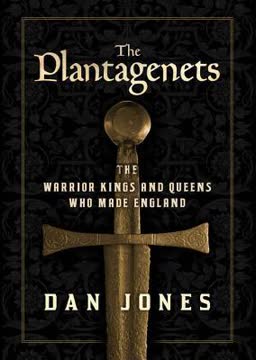

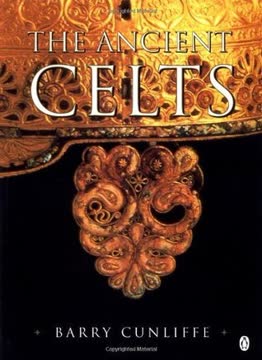
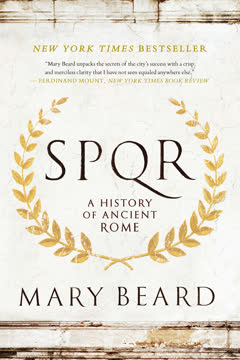
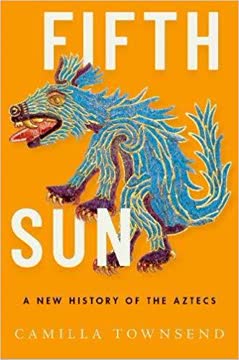
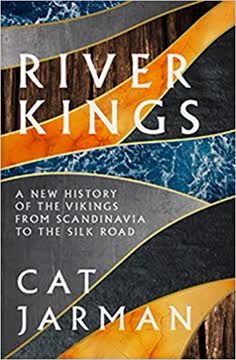
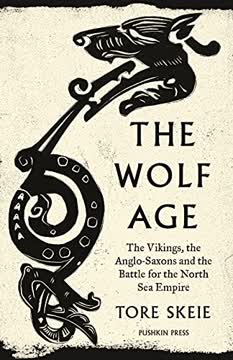
Download PDF
Download EPUB
.epub digital book format is ideal for reading ebooks on phones, tablets, and e-readers.
